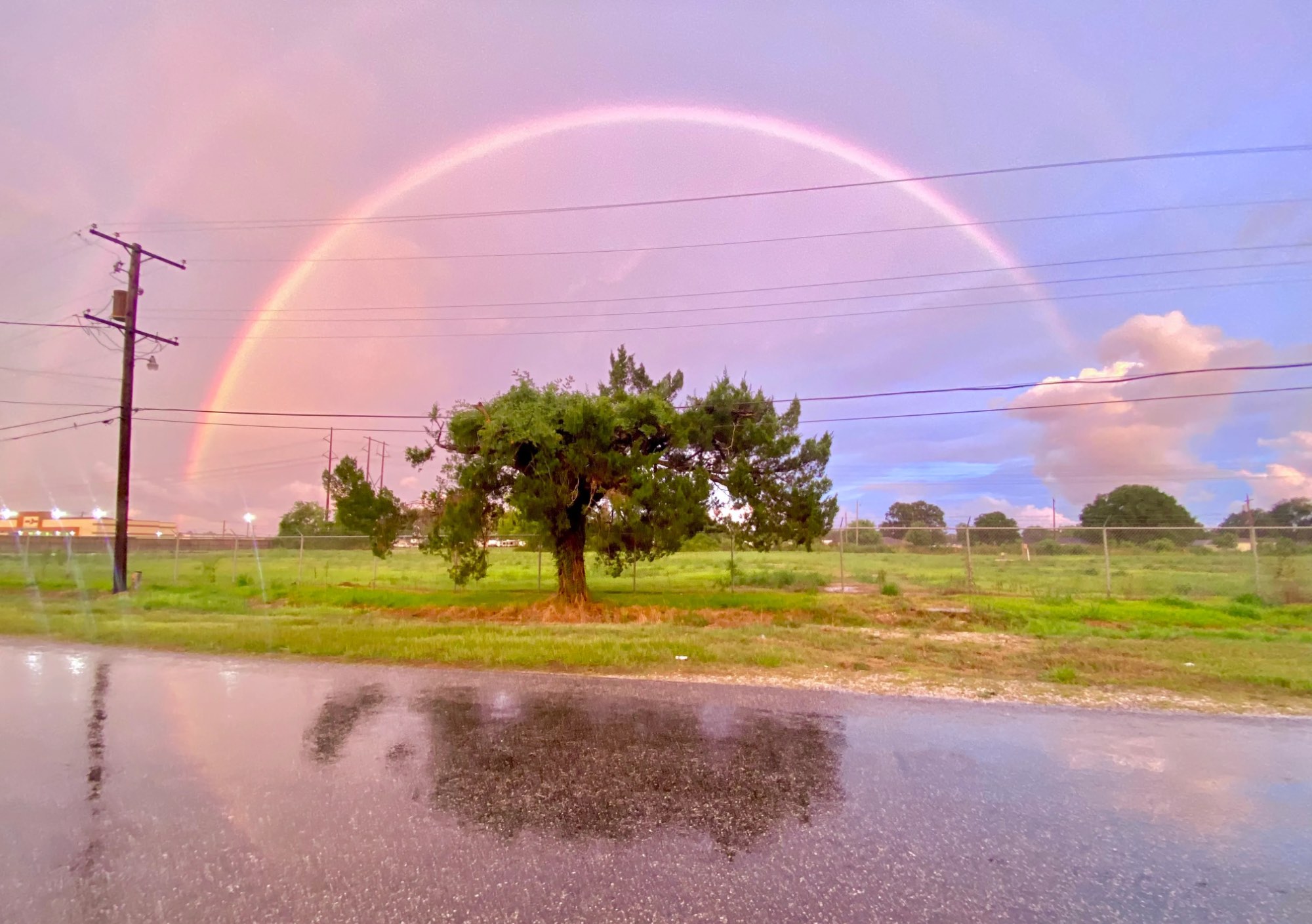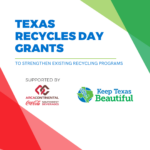Ariana Akbari — Beaumont / Port Arthur, Texas
About the Project
This storytelling project, led by Jazmin Storrs through her internship with Mobilize Green, offers a human perspective to the environmental challenges shaping life across Texas. From the Panhandle to South Texas, from coastal towns to Hill Country communities, interviews capture how people experience heat, drought, hurricanes, floods, and strong winds in their own backyards. Too often, these realities are contained in statistics, while the lived stories remain unheard. By centering personal voices, the project reminds us that whether facing storms, droughts, or flooding, we are bound by a common thread: our humanity. Each story calls us to listen with empathy, see beyond the data, and recognize that caring for the environment is inseparable from caring for one another.
For the People Who Stayed
by Jazmin Storrs
In the face of grief and erasure—from hurricanes to a devastating pipeline project—Ariana Akbari reimagines East Texas through empathy, memory, and climate storytelling that inspires action.
About Ariana Akbari
Ariana Akbari is a climate activist, artist-architect, and environmental designer from East Texas. She’s the founder of Climate Justice Texas, a youth-led conservation nonprofit amplifying local stories and advocating for environmental justice. Deeply rooted in family and place, Ariana channels passion into everything from organizing and advocacy to experimental art exploring climate storytelling and monument as ritual.

What impacts have you observed in your environment?
Ariana grew up surrounded by natural beauty, but also by heavy industry. One of the most visible disruptions came when a pipeline project razed homes and trees in her neighborhood.
“The Pipeline Project demolished all the houses and cut down all the trees. These were places I cared about. Then they drilled for so long, and it was so loud. Because we live outside the city limits, they were allowed to take the land and we weren’t subject to noise ordinances. They could do whatever, and they would drill all night.”
Her childhood was also shaped by powerful storms—Rita, Katrina, and later, Harvey.
“We had a lot of hurricanes when I was growing up. Rita, Katrina, and Harvey happened when I was away at college. I watched my aunts and uncles get evacuated by the Cajun Navy. When you’re a kid or in young adulthood, you’re not super aware. Most people may live at that level their whole life, not realizing the systems impacting how they live. You just feel the repercussions.”




Abandoned toys lie scattered, a welcome mat at the door—yet no home to return to. This scene captures the suddenness with which families had to flee, a quiet testament to loss and displacement.
How has this affected your community?
For Ariana, the pipeline transformed more not just the landscape, but also fragmented the tight-knit fabric of the community she once knew.
“Now it’s so sad and lonely. There’s an endless expanse. We used to have people come trick-or-treat because there were kids across the street. It used to feel safer because people would watch out for you. Now you walk down the street, and there’s no community.”
These losses weren’t only emotional, many have come with health consequences as well. “My dad was diagnosed with cancer. Again, another common theme that you’re going to find in this area is the prevalence of cancer. It’s another thing people like to ignore, but which does come with the oil industry and a lot of other things.”


Before and after: Ariana stands in the same spot of a once vibrant neighborhood, now stripped bare. The lone tree behind her is all that remains. A rainbow arcs over the scene, its beauty above the quiet devastation.
How have you responded?
Ariana’s response to these harms has been personal and collective.
“Looking back, I’ve gone through several stages of grief. One of them was rage, because the loss felt so profound and painful, and I couldn’t get other people to see why it was so important to me. That made me feel alienated and frustrated. Some people here get it, but mostly, you can’t.”
She’s learned to meet others with grace, recognizing that not everyone is given the space to learn or engage.
“I’ve realized my perspective comes from a place of privilege. Not everybody gets the opportunity to finish high school or have a job that lets them even think about climate change… My intentions should be to be more understanding of people.”
In the face of environmental destruction and social fragmentation, Ariana holds a complex understanding of what it means to belong:
“I try to understand myself through the lens of my community, recognizing that I’m deeply rooted here, but also that within what may seem like a unified culture, every person is carrying their own story, their own challenges, their own reality. We’re all living in parallel worlds, even when we share a space.”
She later turned her grief into action, founding Climate Justice Texas to address environmental inequity through education, organizing, and storytelling.

Ariana with her friends, Brittany and Tatiana, canoeing at Martin Dies Jr. State Park in Jasper, TX
Why Care for the Environment?
For Ariana, care begins with embracing stewardship and seeing the land as something to be cherished, not consumed. She challenges us to zoom out from our immediate lives and think about our place in a much larger timeline.
”The Earth isn’t disposable, but we treat it like it is. The way we discard places, species, even people—it’s all connected. Caring for the environment isn’t just about saving nature. It’s about valuing life, relationships, and the communities that depend on them.


“People really struggle to think beyond their own lifetime. We tend to view everything on a human scale, maybe 80 to 100 years if we’re lucky, but the Earth exists on a much longer timeline. We forget that we’re just a small moment in something far greater.
What are your hopes for the future?
Ariana dreams of a world where communities, especially those long devalued, are treated with dignity and care.
“I want people to know that my community has implicit value that has now been lost to eternity. It’s the same concept that’s echoed in an overarching way that we view the Earth as disposable… There’s an enormous sadness to losing something to infinitude.”
Still, she imagines a hopeful vision:
“I love these people so much that I wish that they had the best things, and that includes clean air, bicycle trails, and people fishing with their family. That’s just the world that I would love to see for my community and for all of Texas.”

Ariana and her father at Big Thicket advocating to restore National Park Service staffing

Jazmin Storrs
Jazmin Storrs is a student at the University of Texas at Austin, double majoring in International Relations and Humanities Honors, where she has designed a concentration titled Climate Policy, Human Rights, and the Media. As a Rapoport Community Service Scholar, Jazmin is recognized for her public service. She works as an Election Clerk to support voter access and recently traveled to Washington, D.C. to advocate for underserved communities.
As a Mobilize Green Intern, Jazmin supports Keep Texas Beautiful by leading storytelling on Texans’ environmental experiences. She is also the Climate Lead for UN Young Professionals and Vice Chair for Central Texas Model United Nations.
A violinist of over ten years, Jazmin earned 1st place at the 2022 New York National Orchestra Cup and performed at the International Midwest Clinic in 2023. Passionate about humanizing climate policy, Jazmin is dedicated to ensuring that everyday voices are represented in institutional spaces.

